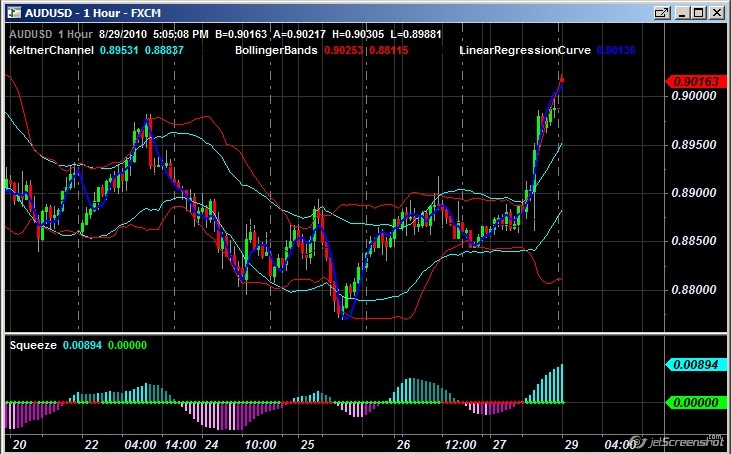Squeeze Indicator Formula
Post on: 1 Июль, 2015 No Comment

Forex
Forex traders often use a system called technical analysis to help them decide when to buy or sell. This system involves making calculations based on past prices over a period of time for the purpose of recognizing certain patterns in the price fluctuations. Two of these patterns that traders often look for are the support and resistance levels, which represent high and low price values. When the currency price nears one of these two levels a major price movement is likely to occur, and this information can be very helpful to a trader. One way to calculate these levels is by using pivot points.
There are various methods that technical analysts use to calculate these levels using pivot points, but the most common is the five-point system, which is calculated by using the high, low, and close of the previous day along with two support levels and two resistance levels. Since the forex system is a 24 hour market, traders generally use as the close the price at the New York Stock Exchange’s close time of 4:00PM. The high and low is then calculated based on the trading period of 24 hours prior to this close, or from 4:00PM the previous day. To start the calculation, one averages these three prices to determine the actual pivot point. It is from this point that the two support levels and two resistance levels will be calculated. To find the first resistance level, one multiplies the pivot point by 2, and subtracts the low. The first support level is similar in that the pivot point is multiplied by 2, but this time the high is subtracted from the product. The second set of levels are determined based on the first levels, as the second resistance level is calculated by adding the pivot point to the first resistance level, and then subtracting the first support level. Finally, subtracting the first resistance level from the pivot point, and then also subtracting the first support level.
So you have determined two support levels and two resistance levels, but what do they mean? These four levels are the most commonly used pivot point levels, and they provide a lot of information when looking at a chart of forex trading data over a period of time. When the price of an investment fluctuates over a period of time, an up-and-down pattern is often developed, depending on the price volatility. The support line can be considered a level where the price of the investment is not likely to go any lower. When viewing a chart with support and resistance levels marked, one will often see the price “bounce†off the support line, as it reaches that point and then shoots back upward. It is when the price does venture below the support level that a trader can anticipate a major price movement downward, and can act accordingly.
Just like the support line sets a floor for the price fluctuations, the resistance line sets a ceiling. When looking at the same chart containing support and resistance lines, often the price of the investment will rise right up to the resistance line and go back down. This pattern is usually repeated several times, until one day the price finally breaks free of the resistance level, most likely prompted by some positive development such as good economic news. When this happens, the price can be expected to keep going up for a while, as a major pivot level has been breached.
Pivot points are used in the forex market by investors of all levels, including banks, professional traders, and mutual funds to help them determine when to buy or sell a particular currency. By delving into the world of technical analysis, the individual investor can take advantage of the tools used every day by the pros.














